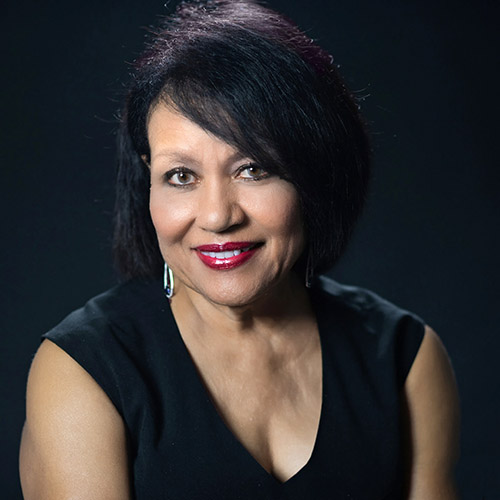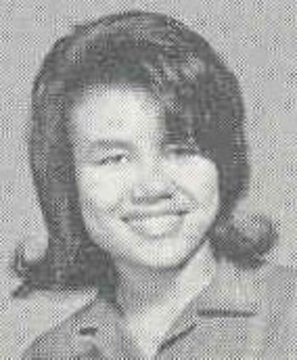LSU First: Maxine Crump
First African American Woman to Live on LSU’s Campus Works to End Racism
02/23/2021
BATON ROUGE - Maxine Crump is a woman of many firsts: first African American woman
to live on LSU’s campus, first African American woman DJ on Baton Rouge radio, and
the first African American woman news reporter on Baton Rouge television. But her
focus has remained the same – not on herself, but being a part of change in society.

Maxine Crump enrolled in LSU in 1964 and was the first African American woman to live on LSU’s campus.
Photo Credit: Maxine Crump
“People used to tell me, ‘You’ll never end racism.’ We’ll end racism. This is the United States of America: the richest, most powerful country on the planet, with the greatest democracy experiment on the planet. It has lasted this long against many odds. We can do this. I have no doubt this country will not continue practicing race divisions,” Crump said.
That’s the mission of her organization, Dialogue on Race Louisiana, to eliminate racism through education, action and transformation. Crump said that change starts through a series of conversations.
“The Dialogue on Race original series is for anyone who would like to learn how to talk about race, or who feels that they have a lot to contribute to a conversation about race, so that’s everyone. It also includes anyone who thinks we shouldn’t be talking about it. Everyone’s welcome,” Crump said.
For Crump and her family, the dialogue on race equality started inside her Maringouin, Louisiana, home. Crump’s ancestors were sold to a plantation there in 1838 between the Jesuits of Georgetown in Maryland to the West Oak Plantation in Maringouin.
“There were no high schools within 25 miles of our home until 1953 when I was in elementary school. Education was just so important because it was so elusive to those who grew up in the rural area, on the bayou, and who had descended from slaves,” Crump said. “My father used to say all the time that we’re paying for a state college and only whites can go there, and it’s not right that Black people’s taxes should be used to pay for LSU while their children are denied from entering. So, when I graduated from high school, he asked me if I wanted to go to LSU, and I said, yeah, of course.”
This was in 1964, the summer the Civil Rights Law had passed. Crump said more African Americans were protesting and had turned their attention to protesting for the passage of voting rights laws.

Maxine Crump's 1965 LSU yearbook photo.
Photo Credit: LSU Libraries Special Collections
“I knew it would be very hard, and I knew that it could have any level of oppression connected to it. We had also seen what happened in Mississippi with James Meredith being beaten. But I wasn’t afraid of any of that – it was Freedom Summer, and kids my age were out protesting and riding buses. I felt like I’m just sitting here and doing nothing, and this is a chance for me to be involved. I was ready for whatever, and I knew the value of it,” Crump said.
She enrolled at LSU in 1964 and was the first African American to live on campus, an experience she reflects upon fondly.
“Living in a dorm was like a dream – to be able to be right there on campus. I didn’t have to ride home and be tired at the end of the day,” Crump said. “It was a very small dorm, Louise Gehrig, which is not a women’s dorm now. When I moved in, I found out I had a private room, and I didn’t quite know why. I thought maybe a roommate was coming, or they were protecting students who had a problem with me being in woman’s housing. One of the things they had done was stack the dorm with students from California, the north, and from other countries. Many of them were students studying art, music, and theater. But I got a positive reaction from the group.”
Even as the first, Crump said she was focused on making the best of her time at LSU.
“I always felt a sense of responsibility, not necessarily a weight, because my parents didn’t give me a warning of me having to carry any kind of banner. They just told me to do the best I can and know that this opens up an opportunity and to take advantage of it,” Crump said.
That opportunity included being a part of a change to the LSU handbook.
“We (women) couldn’t wear pants on campus, it was in our handbook. I was present one night when a group of girls in the dorm were talking about how ridiculous it was that we couldn’t wear pants. We asked each other what would happen if we all wore pants the next day? Someone called the other dorms around campus, and everyone agreed to do it. When we got dressed that morning we didn’t know if everyone was going to show up in pants, and there I was in pants walking across campus and all the other girls were in pants too. I thought to myself, ‘I'm the first woman of color in the dorm, and I've already broken the color barrier. Now here I am about to get in trouble and kicked out of school for wearing pants.’ But, of course, they didn’t kick us out. That day they changed the policy,” Crump said.
Crump said many of her peers questioned why she attended LSU.
“At the time when I was there, there were many African American students who would say, ‘Why would you go there? You know they don’t want you there.' I said, 'Because it’s our university. It’s the flagship university, and it’s ours.’ They would say, ‘How can you call it ours? It’s a white school,’ and I would say ‘No, it’s not intended to be, and now the law has changed. If nobody went it would remain a white school,’” said Crump.
While a student at LSU, Crump studied office administration.
“It was something that I had some skill for. Our high school had just gotten a typing class my senior year, and I was a pretty good student in typing,” Crump said. “I had several students who I had gotten to know say, ‘Why don’t you get into journalism?’ I thought they didn’t have a lot of Black journalists. But they did, of course, but basically not for mainstream outlets. Others suggested I teach, but I had no desire to work in an academic setting.”
Those recommendations from her peers to work in journalism and education would come to fruition a few years later. But after struggling in some of her classes, she accepted a job at a Louisiana chemical plant.
“My mother used to ask, ‘Why don’t you go back and get your diploma?’ But my work was in the field I had studied, and I advanced in that. I just don’t want to go back, and I didn’t,” Crump said. “It was right for me at the time because I was able to get a job easily. By 1970, many companies were trying to expand and become more diverse, so they needed students with specific skills, and I was able to get a job right away.”
But she wasn’t working in an office for long, when she was offered a job on Baton Rouge radio. She was the city’s first African American woman DJ. That job led her to television, where she joined WAFB as the first African American woman news reporter on Baton Rouge television. It was during her time on television that she said she “realized that news coverage was leaving gaps in its reporting around race and what was covered. I knew that these gaps existed in society and saw it in the vague, coded language from public officials and many others, and that is problematic in conversations about race.” For example, she said the term “busing” started to override the term “school segregation.”
“I saw a need for a clearer, more accurate picture of race in society. I realized we needed to come up with a way to talk about race, where people would not knit their brows in confusion,” said Crump. “I gathered up everybody in this town that I knew had any background in activism or history or sociology and pulled them in the room on a regular basis to help me talk through this. Over time, a lot of people worked with us until finally we could print a document that said, ‘This is the Dialogue on Race series.’
Today, the program includes participants from seven states. She and her team are working on expanding the program to reach more areas of the country.
“My goals were so far ahead of what people told me were possible. Some of those goals are only now being realized,” Crump said. “We started seeing a gradual increase in participation in the Dialogue on Race series, or DOR, in 2015, and in 2016 when Alton Sterling was shot, it exploded. Then again after the flooding in Baton Rouge, later that year it went up again. Then the election in November it exploded again. It kept expanding. And then when George Floyd was killed it exploded in a way that we could hardly keep up with it, I could hardly catch my breath. We had to shift to virtual. I now have staff. More people have become interested in the Dialogue series, and we are totally expanding.”
Crump said they are able to reach more people because of the shift to virtual outreach and programming.
“Things are improving, but it tells me that 400 years cannot be fixed in a year. I count all improvements as victories. Number one, we’re talking about it. Number two, we’re developing a language for talking about it, and we’re getting a little more honest about our history. In whatever way the Dialogue on Race series is a part of meaningful change, it means it is doing the job it was designed to do. It is personally and professionally fulfilling to be part of an organization that is working to help bring this country closer to its founding principles. I believe if this trend toward accuracy and honesty continues, we have a really good chance of ending racism,” Crump said.
-30-
Contact Rachel Holland
LSU Media Relations
rachelsp@lsu.edu